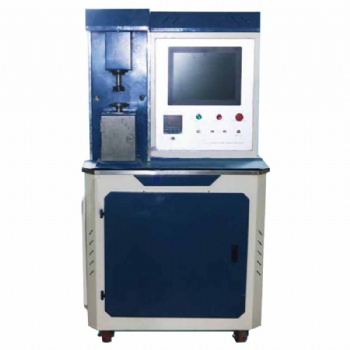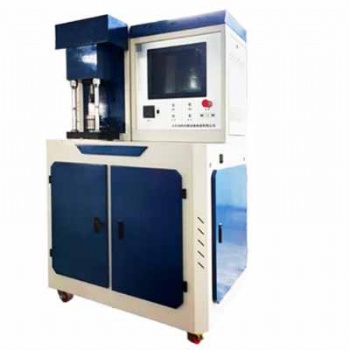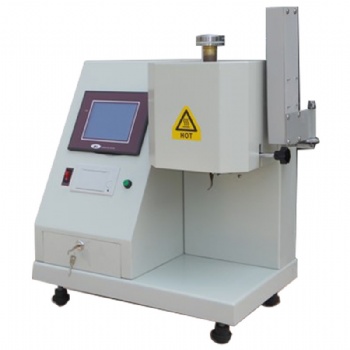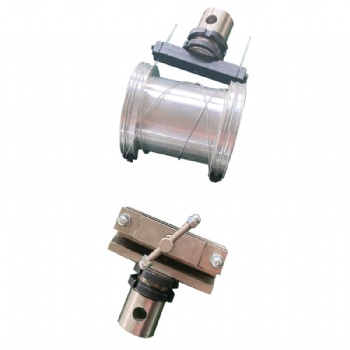2000N tension stress testing equipment
2000N tension stress testing equipment
single column computer control electronic tensile testing machine
1 Introduction
l Suitable for tension, compress, shear, peeling, tear, test
l Attractive appearance, easy operating, stable and reliable
l Dual test space, upper space for tension test, bottom space for compress test
l Crossbeam speed can reach up to 1000mm/min, suitable for most test speed
l Low noise during test
l Suitable for industries of metal manufacturing, non-metal manufacturing, industrial and mining enterprises, technical supervision, commodity inspection and arbitration and other departments
2. Test method
GB/T 2611 testing machine General technical requirements
GB/T 16491 electronic universal testing machine
GB/T 13634 Calibration of standard dynamometer for single-axis testing machine inspection
ISO 376 Metallic materials-calibration of force-proving instruments used for the verification of uniaxial testing machines
GB/T 16825.1 Inspection of static single-axis testing machines - Part 1 : Tests and s
ISO 7500-1 metallic materials-verification of static uniaxial testing machines- parts 1: tension/compression testing machines-verification and calibration of the force-measuring system
GB/T 228 metal materials tensile test method at room temperature
GB/T 232 metal material bending test method
GB/T 7314 metal materials room temperature compression test method
3. Technical parameters
No | Item | Specification |
1 | Force capacity | 100N,200N,500N,1000N,2000N,5000N |
2 | Force measuring range | 0.4%-100%FS |
3 | Error of force value | Less than ±1% of set value |
4 | Resolution of test force | 1/500000 |
5 | Displacement resolution | 0.0025mm |
6 | Accuracy of elongation measuring | ±0.5% |
7 | Crossbeam speed range | 0.05-500mm/min |
8 | Precision of displacement speed control | ±1%(0.01-10mm/min); ±0.5%(10-500mm/min) |
9 | Accuracy of constant force, constant displacement, displacement elongation control | When set value is less than 10%FS,error is less than ±1.0% of set value When set value is more than 10%FS,error is less than ±0.1% of set value |
10 | Accuracy of deformation control | When set value is less than 0.05%FS,error is less than ±2.0% of set value When set value is more than 0.05%FS,error is less than ±0.5% of set value |
11 | Distance between tensile grips | 650mm |
12 | Voltage | Single phase,220V±10%,50Hz |
13 | Dimension | 520x480x1550mm |
14 | Weight | 80kg |
How to Select the Right Tensile, Compression, Bending, Shear, Peel, and Tear Testing Machine: Calculation Formulas with Examples
Selecting the appropriate testing machine for tensile, compression, bending, shear, peel, and tear tests requires careful consideration of multiple factors, including the force range, specimen dimensions, test standards, and machine capabilities. Below are the key calculation formulas to help determine the necessary machine specifications, along with examples for better understanding.
1. Tensile Testing Machine Selection
Tensile testing machines measure the maximum tensile strength and elongation of materials.
Key Formula:
Fmax=σmax × A
Where:
Fmax = Maximum required force (N)
σmax = Ultimate tensile strength of the material (MPa)
A = Cross-sectional area of the specimen (mm²)
Example: For a steel specimen with σmax =400MPa and cross-sectional area A =100mm²:
Fmax=400 × 100=40,000N (40kN)
A 50 kN tensile testing machine would be suitable.
2. Compression Testing Machine Selection
Compression tests determine a material's resistance to compressive forces.
Key Formula:
Fmax=σc × A
Where:
Fmax = Maximum required force (N)
σc = Compressive strength of the material (MPa)
A = Cross-sectional area of the specimen (mm²)
Example: For a concrete cube with σc =30MPa and A =1502=22,500mm²:
Fmax=30 × 22,500=675,000N (675kN)
A 1000 kN compression testing machine would be ideal.
3. Bending Testing Machine Selection
Bending tests evaluate the flexural strength of materials.
Key Formula for Three-Point Bending:

Where:
σf = Flexural stress (MPa)
F= Applied force (N)
L= Span length (mm)
b= Width of the specimen (mm)
h= Thickness of the specimen (mm)
Example: For a wooden beam with L=500mm, b=50mm, h=25mm, and requiring a stress of 10 MPa:

A 5 kN bending tester would be suitable.
4. Shear Testing Machine Selection
Shear tests determine the shear strength of materials.
Key Formula:
Fmax=τ × A
Where:
Fmax = Maximum shear force (N)
τ= Shear strength of the material (MPa)
A = Shear area (mm²)
Example: For an aluminum sheet with τ=90 MPa and A=200mm²:
Fmax=90×200=18,000N(18kN)
A 20 kN shear testing machine is recommended.
5. Peel Testing Machine Selection
Peel tests measure the adhesion strength between bonded materials.
Key Formula:

Where:
P= Peel strength (N/mm)
F= Measured force (N)
W= Width of the specimen (mm)
Example: For a tape with F=50N and W=25mm:

A peel testing machine with at least 5 N force capacity is required.
6. Tear Testing Machine Selection
Tear tests determine the resistance of a material to tearing forces.
Key Formula:

Where:
Ftear= Tear strength (N/mm)
F= Measured force (N)
t= Thickness of the specimen (mm)
Example: For a rubber sheet with F=100N and t=2mm:

A tear testing machine with 100 N capacity is needed.
When selecting a testing machine, ensure that the maximum force capacity of the machine is at least 1.2 to 1.5 times the calculated force to account for safety margins and unexpected variations. Additionally, consider compliance with relevant test standards (ASTM, ISO, GB, EN, JIS) and machine features such as speed control, data acquisition, and test automation.
By using the above formulas and examples, engineers and manufacturers can accurately determine the appropriate testing machine specifications for their specific material and application requirements.
Categories
- electronic universal testing machine
- hydraulic universal testing machine
- impact testing machine
- compression testing machine
- horizontal tensile testing machine
- manhole cover testing machine
- pellet compression testing machine
- material testing machine
- steel strand tensile testing machine
- rubber testing equipment
- plastic testing equipment
- load cell
- Böhme abrasion tester
- all testing machine and equipment
- ceramic tiles testing equipment
- asphalt mixture testing equipment
- footwear testing machine
- test fixtures
- torsion tester
- cupping testing machine
- friction and wear tester
Contact Us
- +86-18615632092
- wtbequipment@hotmail.com
- sophie-tester
- +86-18615632092









 售前客服
售前客服